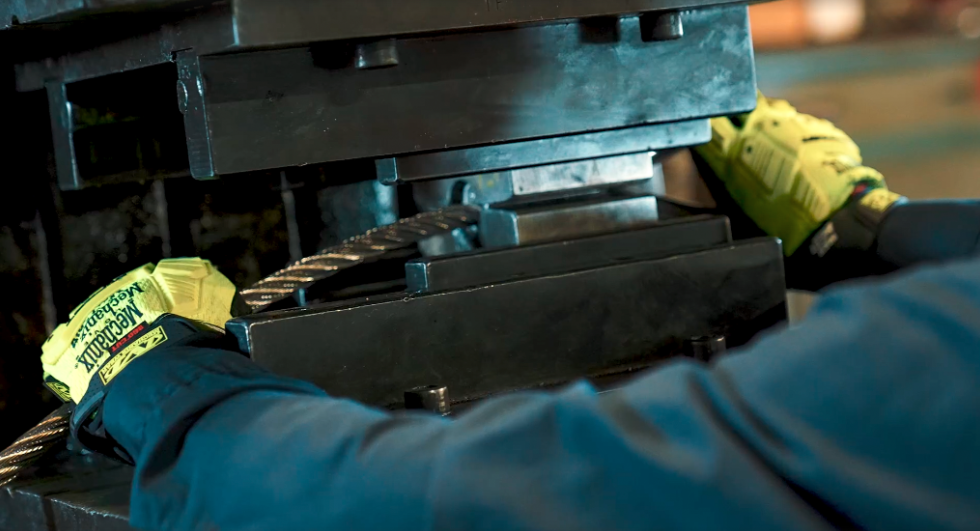Why Dexterity Matters in Safety Gloves
Protection might be the most important thing about a safety glove, but it’s not the only thing. There are other factors that impact a safety glove’s effectiveness, such as comfort, durability, cost, and, of course, dexterity.
Why dexterity?
Gloves are supposed to do more than just protect. Otherwise, you may as well just shove your hands into a box of safety glass and be done with it.
The entire purpose of a safety glove is help workers do their tasks effectively; both in terms of protecting the hand, and in terms of allowing freedom of movement. If you remove the “freedom of movement” part, then the glove isn’t truly doing its job.
Workers will have to do things like pick up or manipulate small parts or tools. They may have to securely grip heavy objects. They may have to use control panels, either through switches, buttons, and levers or through a touch-screen. They may need to feel an object through a glove using sensitivity to temperature or pressure.
PPE manufacturers will often engage with their end-users to better understand the needs and protection requirements of the wearer, while designing a protective glove that the wearer can actually be productive in. When Mechanix Wear says “fit, form, and function,” it’s because we want to give end users hand protection that can help them perform their tasks adequately. That means paying close attention to a glove’s level of dexterity.
The National Institutes of Health (NIH) study on glove dexterity addresses both the need for the wearer to both protected and productive.

Real-life dangers of poor dexterity
Poor dexterity in a safety glove can lead to clumsiness-driven incidents. Other incidents could result from workers choosing not to wear uncomfortable gloves at all.
There is a real-life incident where a steel mill maintenance worker was tasked to remove a thin metal shim from its packaging and insert it onto a roller. The company-provided protective gloves were made of the thickest, heaviest material to prevent the employees from getting cut. However, these gloves were all sized Large, because 85% of the workers who needed these gloves were of that size. No special provision was made for those who with different-sized hands.
For this person, the thickness of the material and the oversized fingers made it impossible for them to remove the shims from the packaging, and they were unable to feel the part properly in order to grasp it. So what did the employee do?
They stopped wearing the glove.
The employee’s productivity went up—for a few days. He was able to get the shim out of the packaging and onto the roller much faster than before. But on day 3 of not wearing the gloves, he suffered a serious laceration on two fingers of his dominant hand as he attempted to remove a shim. This injury required sutures and lost time from work until his fingers healed.
The need for proper PPE—now
Following the incident, management had lengthy conversations with safety distributors and PPE manufacturers. They purchased better protective gloves that included a variety of sizes. But it was too late for the worker. This was an entirely preventable incident had the company provided gloves that fit better and gave the right amount of dexterity.
In addition to healing and hopefully fully recovering from a hand or finger injury, the average medical cost of a laceration is greater than $45,000; a crushing injury exceeds $140,000!
It’s ridiculous to wait for an injury to occur before deciding to seek out better solutions. A safety professional’s job is to search, find, and either recommend or provide the right PPE for the identified hazards, as found in conducting an effective risk assessment.
Unfortunately, in this example, the employee was disciplined for failure to wear the provided PPE, even though it was the company that failed to provide appropriately-sized hand protection. When the employer partnered with the distributor and manufacturer to find the right PPE, injuries went down, and more employees were observed wearing the PPE when performing tasks.
The solution
As a global PPE manufacturer, Mechanix Wear offers expertise in hand protection that provides feel, fit, and function to the wearer. Dexterity is one of the central features of every one of our gloves, and we do it without compromising safety or comfort.
For example, our Max Cut™ series provides the highest level of cut resistance (A9), but with an incredibly thin amount of material, so that the wearer still has full dexterity and retains touch sensitivity in their fingers for delicate work.